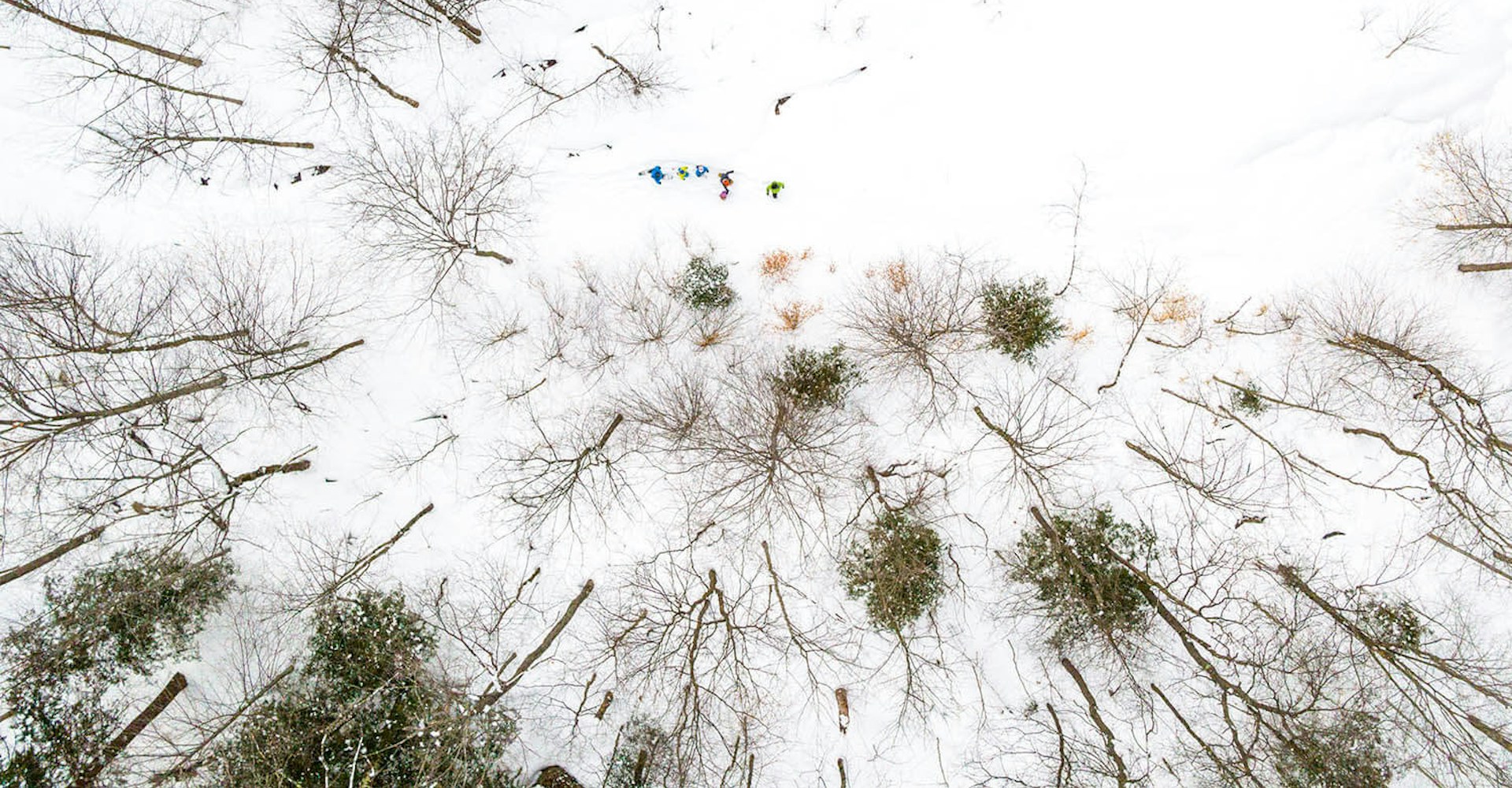Canada’s world renowned Group of Seven painters came together officially in Toronto in 1920. Through their art the great Ontario wilderness, then the great Canadian wilderness—sleeping woods, dark water, endless sky and looming mountains—came to represent an essential part of our national identity. The beautiful isolation of those landscape paintings offers a romantic vision of an untamed land (which, of course, indigenous Canadians had inhabited for millennia).
First Nations people shared their hard won mastery of the landscape. Artists absorbed their knowledge of woodcraft, particularly their primary means of winter travel: snowshoes.
Group of Seven painter A. Y. Jackson had a special fondness for snowshoes. He was nicknamed “Pere Raquette” after a Québecois term for the snowshoe.
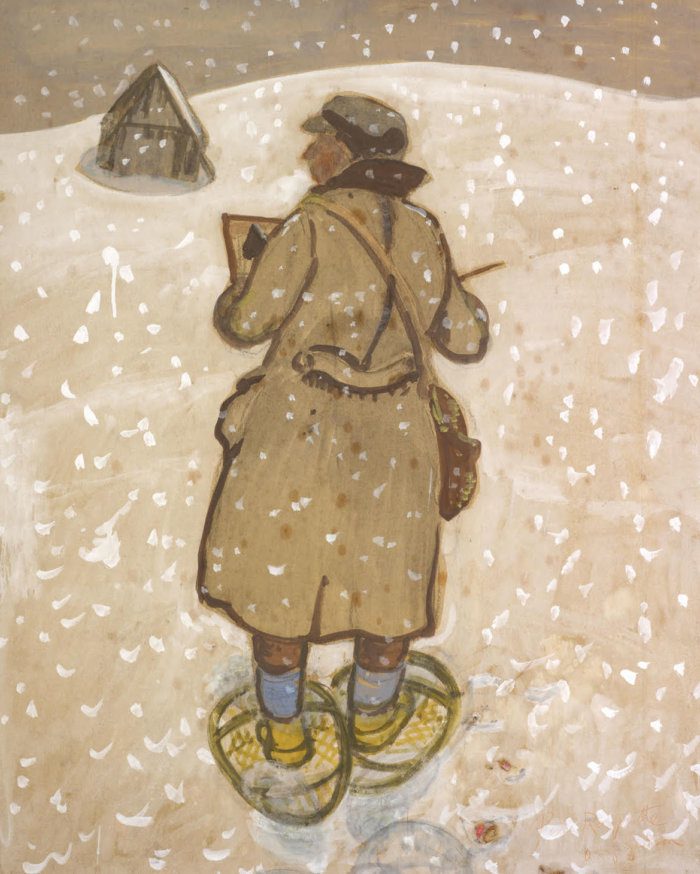
No one knows exactly when or where snowshoes were invented, but historians are confident that they came across the Beringia land bridge (now the Bering Strait) with waves of asian hunter-gatherers between 30,000 and 5,000 years ago. The first human footprints on North American soil may well have been made by snowshoes.
As humans spread across the north, different terrain—mountains, plains, frozen lakes and forests—required modifications to snowshoe design. The rigours of migratory hunting and gathering would also have required refinements for speed, for endurance, and to accommodate people of different size, age, sex and ability.
Over time Native Canadian artisans perfected designs for cold weather travel over any landscape. Long narrow shoes were effective on deep snow and flat terrain, peat bogs and frozen lakes. Short, wide and round shoes enabled passage through forests and over hills where long shoes would be awkward and dangerous.
Early native-designed snowshoes were not meant for recreation or for artistic inspiration but for survival, for following the herds, fleeing danger, exploration and migration. Their designs served primarily to distribute the wearer’s weight so they could “float” above deep snow without tiring.
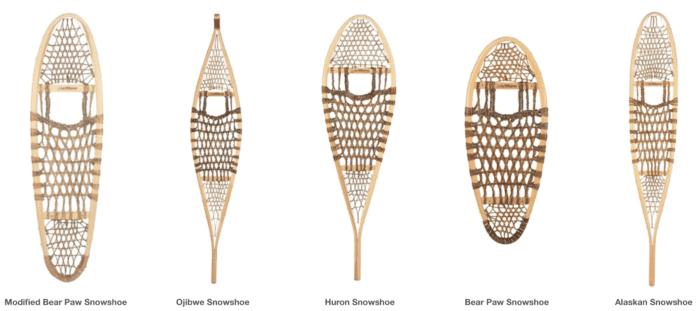
Immigrants from Europe—explorers, trappers, soldiers, missionaries and settlers—learned to rely on snowshoes to hunt, to trade and to colonize. As settlements gave way to villages and towns, the use of horses and horse drawn vehicles lead to a reduction in the dependence on snowshoes. In the mid 19th century though, sportsmen took up snowshoes again, forming competitive athletic clubs. By the early 20th century snowshoeing clubs had been established across the country under the Canadian Snowshoer’s Union.
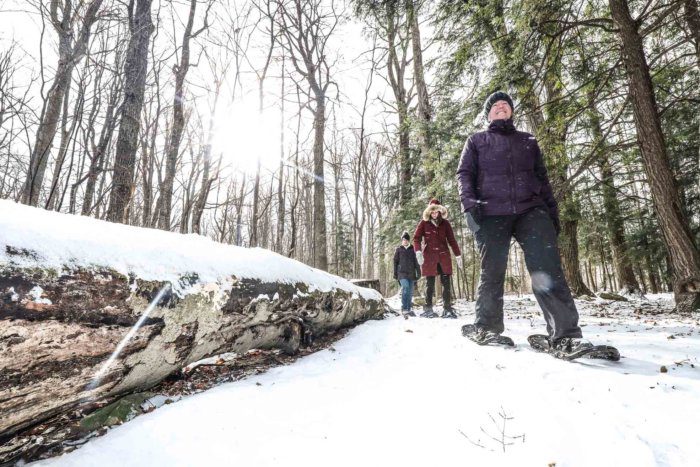
As indigenous populations spread across the country, regional variations in snowshoe design had become identifiable. An elongated spear shape was known among the Ojibway of the Great Lakes region. A leaf shape was known among the Huron and Algonquin and was the style adopted by the first French settlers in Canada. An oval or “Bear Paw” design was common in the east, particularly adapted to forests and lowlands. And an elliptical form—a modified Bear Paw—originated in eastern North America in the mid 20th century.
Sadly, the popularity of snowshoeing fell again after post-WWI European immigrants brought their love of skiing to Canada. Then, except among outdoor enthusiasts, true explorers, and interior decorators, snowshoes were something of a novelty. From the 1980’s on, however the modified Bear Paw design adapted by innovators in aluminum, plastic and steel, and it’s low cost and durability lead to a resurgence in sporting on snowshoes.
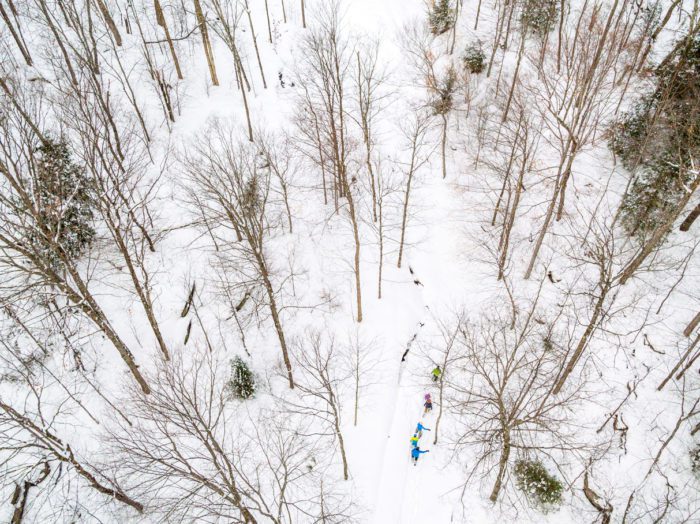
And today dozens of YDH conservation areas offer a variety of snowshoeing trails. There is no better way to enjoy a relaxed, deep snow winter hike with family and friends.
For more details, visit:
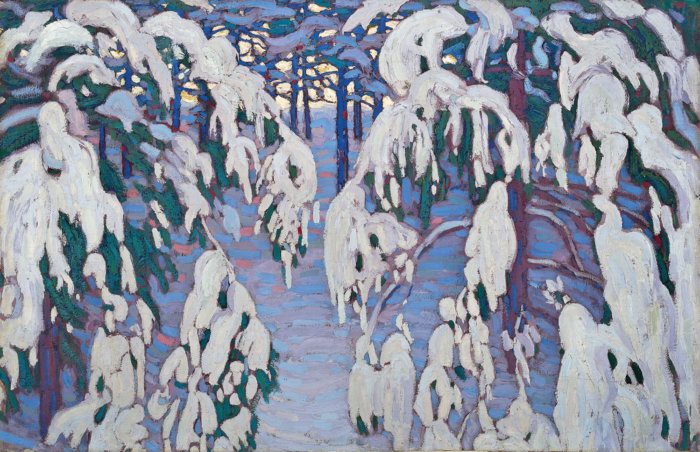
And if you’d like to explore on snowshoes the way the Group of Seven artists once did, with camera rather than canvas, consider the McMichael Canadian Art Collection in Kleinburg which has its own sprawling grounds (still open in spite of the current York Region COVID-19 lockdown) with trails and sculptures. The Group of Seven paintings line the walls inside the gallery, along with a fabulous collection of Native Canadian art.
A recent update from Credit Valley Conservation:
We will have snowshoe rentals at Terra Cotta and Island Lake Conservation Areas beginning in January as the conditions permit so people can come out and use our trails. It is all self-guided (we don’t have tours). We do have some family-friendly trails but they aren’t maintained over the winter. One of the things we’re doing this year is designating some of our trails as one-way to help with physical distancing. We’ll have signage round the park to help people navigate the trails.
All of our snowshoes for rentals are modern/aluminum. We don’t have any of the traditional style that we still rent.
We recommend that people plan ahead and consider the following before heading to one of our parks:
• Check our Parks Advisories page before they leave home for our current hours of operations and park conditions https://cvc.ca/news/story/parkconditionsupdate/.
• Check the weather and dress accordingly
• Visit a park close to home to limit unnecessary travel
• Visitors are encouraged to limit their group sizes to the members of their immediate household.
• Practice physical distancing by staying two metres (six feet) apart
• Stay on trails, stepping off only to allow others to pass
• Yield to oncoming trail users when crossing bridges and boardwalks
• Do not gather or arrange to meet family, friends or other groups
• Do not litter. Take all trash with you when leaving the property
• Be mindful of wildlife and plant-life
• Do not trespass on private property next to CVC trails
• Respect the instructions provided by our dedicated staff
• Bring your own hand sanitizer as there are no hand-washing facilities available
• Bring water and a snack if you plan to be at the park for an extended period of time
• Bring a camera to capture memories from your adventure!
Thanks to Jamie Williams, Specialist, Marketing & Communications | Credit Valley Conservation
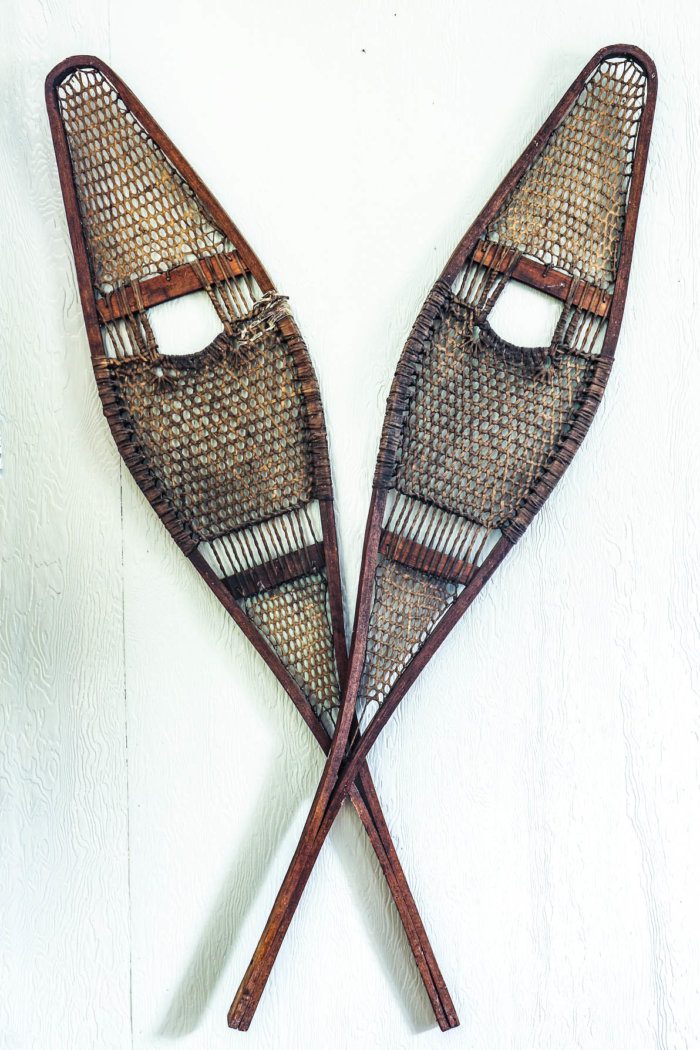
Resources/Links
– Toronto Region Conservation Authority: https://trca.ca/
– Credit Valley Conservation: https://cvc.ca/enjoy-the-outdoors/activities/snowshoeing/
– Ontario Snowshoeing and Backcountry Trails: https://www.ontariotrails.on.ca/index.php?url=trails/activity/snowshoeing-backcountry [more than 30 in YDH]
– Ontario Trail Council: https://www.ontariotrails.on.ca/
– McMichael Collection Grounds audio tour: https://soundcloud.com/mcmichael-gallery/mcmichael-audio-guide-tour
– Beginner’s Guide: https://www.clrm.ca/a-beginners-guide-to-snowshoeing/
– LL Bean how-to: https://www.youtube.com/watchv=uepDuBXXBM8&feature=emb_rel_end&ab_channel=L.L.Bean
– Snowshoe Canada non-profit sport promotion/event coordinator : https://www.snowshoecanada.ca/
– Snowshoes Canada Store: https://www.snowshoescanada.com/
– Canadian Outdoor Equipment: https://www.canadianoutdoorequipment.com/_search.php?page=1&q=snowshoes
– How to Repair Vintage Snowshoes: https://www.artofmanliness.com/articles/how-to-rebuild-and-repair-vintage-snowshoes/
